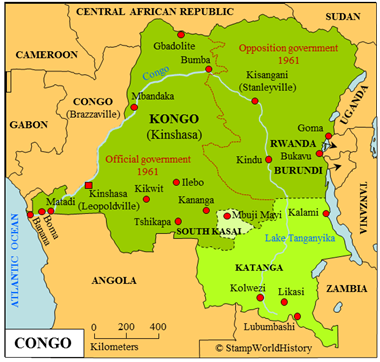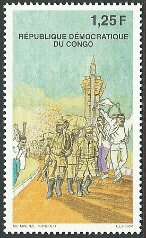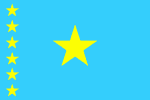
Congo
Republic
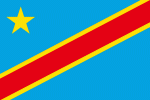
Congo
Democratic republic
Quick reference
General issues: Republic 1960-1964, Democratic republic 1964-1971, Democratic republic 1997-Present
Country name on general issues: Congo
Special issues: Indian forces in Congo 1962
Currency: 1 (Congo) Franc = 100 Centimes 1960-1967, 1 Zaire = 10,000 Sengi 1967-1971, 1 (Congo) Franc = 100 Centimes 1997-Present
Population: 14 169 000 in 1960, 77 433 000 in 2014
Political history Congo (Kinshasa)
Congo – often called Congo Kinshasa to distinguish it from its neighbor Congo Brazzaville – is located in Central Africa. Congo is populated by a large number of Bantu peoples and a small number of Pygmy peoples. In the ‘scramble for Africa’ in the 19th century the Congo basin is one of the last parts of Africa the colonial powers show interest in. In 1885, the colonial powers agree to award Congo to the Association Internationale du Congo, a company founded by the Belgian king Leopold II. In the following year, Leopold establishes the Congo Free State, ruled in personal union by Leopold II himself. Congo is run as an exploitation colony and the violation of humanitarian values is such that, under international pressure, Congo is, in 1908, transferred to the Belgian government as the colony of Belgian Congo. Belgian Congo in 1960 gains independence as the republic of Congo.
Directly after independence Congo is immersed in the ‘Congo Crisis’. The official government in Leopoldville[1]The current Kishasa. is confronted with an opposition government in Stanleyville[2]The current Kisangani. . Furthermore, for ethnic and economical reasons, independent states are proclaimed in Katanga and South Kasai. Factions in Congo are supported from outside by different countries, making the Congo Crisis one of the main theaters of the Cold War. The United Nations send forces to Congo in 1960 to appease the warring factions – forces that will be in Congo until 1964. A final end to the Congo crisis comes in 1965, when Mobutu Sese Soko seizes power and manages to unite the country. Mobutu will be in power until 1997.
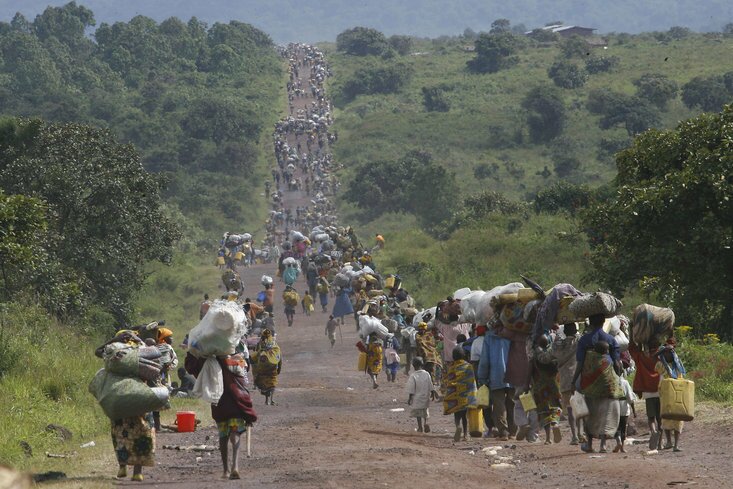
2008 – Refugees near Goma
Increasing discontent with the rule of Mobutu in 1996 leads to civil war. From 1996 to 1997, the First Congo War is fought and leads to the resignation of Mobutu. The resignation of Mobutu will not bring stability to Congo. From 1998 to 2002, the Second Congo War escalates into the largest military conflict in the history of Africa – due also to the involvement of several African countries supporting the different factions in Congo. United Nations forces are sent to Congo in 1999. Although a peace agreement is signed in 2002, a number of successive militias will, until today, be in armed conflict with the government – conflicts that are often linked to conflicts in neighboring countries. The United Nations forces have stayed in Congo until today.
Congo is considered to be one of the richest countries in the world in mineral resources. The ongoing conflicts in the country have, however, prevented Congo from taking advantage and from developing its economy.
Congo, in 1960, is established as a republic to become a democratic republic in 1964. The name of the country is changed to Zaire in 1971 to be changed back to Congo in 1997.
Postal history Congo (Kinshasa)
The first stamps to be issued in Congo are those of Congo Free State from 1886 – superseded from 1908 by the issues from Belgian Congo. The republic of Congo has issued stamps from 1960 – the first set commemorating independence. Congo has, from 1971, issued stamps as Zaire and from 1997 again as Congo.
During the Congo crisis, the break away states of Katanga and South Kasai have issued stamps from 1960 to 1962 and in 1961 respectively. The Indian forces that were part of the United Nations forces in Congo used stamps issued in 1962 – stamps from India overprinted ‘U.N. FORCE (INDIA) CONGO’.
Album pages
← Previous page: Congo (Brazzaville)Next page: Cyrenaica →

